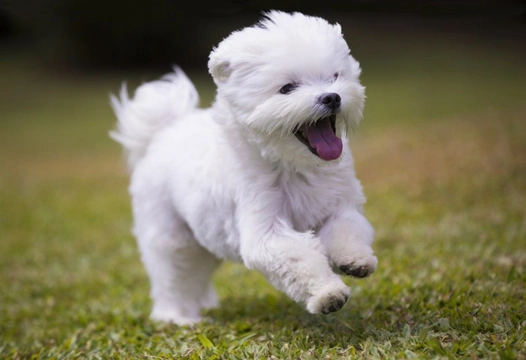
Ten things you need to know about the Maltese dog before you buy one
The Maltese dog is one of the better-known small, white and fluffy dog breeds that are popular in the UK today, and one that is in much demand with puppy buyers.
This petite dog breed can be a very rewarding pet for the right type of owner, and their small size makes them a viable choice for many different types of homes too – and so every year, thousands of dog lovers in the UK consider buying a Maltese dog to join their families.
However, before you make a decision on the right dog breed for you, it is important to find out as much about the breed as possible, including all of their good and bad points and any particular challenges.
With this in mind, this article will tell you ten things you need to know about the Maltese dog breed – before you go ahead and buy a puppy.
The Maltese is a toy dog breed
First up, the Maltese dog is very small – standing between 20-25cm tall at the withers and weighing less than 3.6kg on average – and they’re classed as a toy dog breed for Kennel Club registration purposes.
This makes them petite enough to suit virtually any home, but it does also mean that they are a little delicate, and special care must be taken to keep them safe from harm, such as when playing with larger dogs in the dog park.
They’re quite expensive to buy
Something any prospective Maltese puppy buyer should take into account is that despite their small size, this is actually quite an expensive dog breed to buy, with the average asking price for pedigree dogs of the breed being around the £1,108 mark and even for non-pedigrees, the average asking price being £765.
This is more than the averages for many much larger breeds, and so can mean that Maltese ownership is simply outside of the reach of some potential owners. However, as a small breed, the Maltese tends to be quite economical to keep after purchase!
They’re not the most intelligent of breeds
Toy dog breeds don’t tend to be the most intelligent of dogs, and the Maltese too falls towards the lower end of the canine intelligence spectrum. They’re ranked in 111th place out of a total number of 138 different dog breeds in the Coren classification of dog breeds by intelligence, which is widely used as the benchmark for breed-by-breed comparisons.
When applied in practice, this means that the Maltese may take a while for training commands to stick, and they might need several repetitions of a command before they will comply with it. However, they should still be capable of learning and exhibiting all of the key commands a dog needs to know to stay safe and obedient.
They rarely tolerate being left alone
Maltese dogs don’t thrive if left in their own company for very long, and many dogs of the breed are highly intolerant of being left alone at all. This can be very variable, and empathic conditioning to stay alone for short periods of time from a young age can mitigate this to an extent, but this is not a breed to consider if you spend the greater part of the day out at work.
The company of another dog can help to keep a Maltese calm and happy when you are out, but they do need plenty of human company.
Maltese dogs tend to be very vocal
The Maltese breed as a whole is one that tends to be rather vocal, and they are often quick to bark for no good reason and are commonly quite yappy. This is particularly likely to occur if the dog is left alone when they are intolerant of this, and you may not even be aware of this fact until your neighbours start complaining about it!
Maltese dogs have low-shedding coats and may suit allergy sufferers
Maltese dogs have wiry, curly coats that tend to trap any hair that is shed within the body of it rather than dropping it around the home. This in turn means that allergenic dander is less widely distributed and so, may be less likely to trigger allergy symptoms in people sensitive to them.
However, this does not mean that the Maltese (or any dog) is hypoallergenic, and how any given allergy sufferer reacts to any given dog can be hugely variable.
…But they do need quite a lot of grooming
Because shed hair remains trapped in the coat, Maltese dogs need to be groomed daily to remove it and to keep their fur in good condition.
Most dogs of the breed get used to this from an early age, and actively enjoy the attention.
They don’t need a huge amount of exercise
As a small toy dog breed, the Maltese is not overly challenging to exercise. Ideally, just a couple of half-hour walks each day is perfectly sufficient to keep a Maltese fit and happy.
They can be a good choice for first time owners
Because Maltese dogs are little, not hugely high energy and not notably challenging in most regards, they can be a good fit for lots of different types of dog owners, including those who are not highly active and also those that have not owned a dog of their own before.
Plenty of research is required first of course, but theoretically there is nothing stopping a Maltese dog being perfectly appropriate for a newcomer to the world of dog ownership.
…But not if you don’t have a lot of time to dedicate to your dog
That said, if you aren’t at home or able to keep your dog by your side for most of the day, the Maltese dog won’t be a good pick for you, as they rarely tolerate being left alone for too long and are apt to suffer from separation anxiety.



